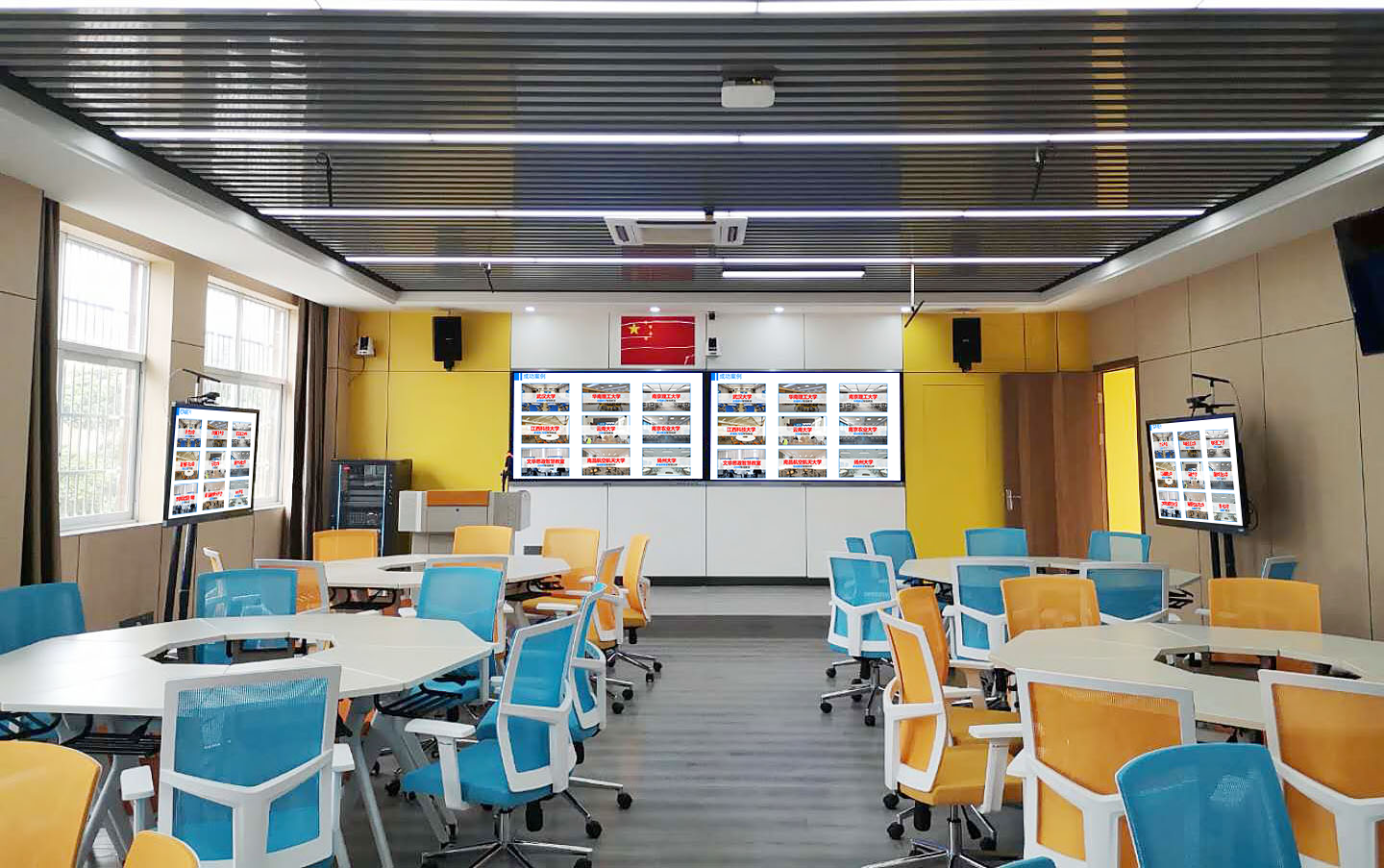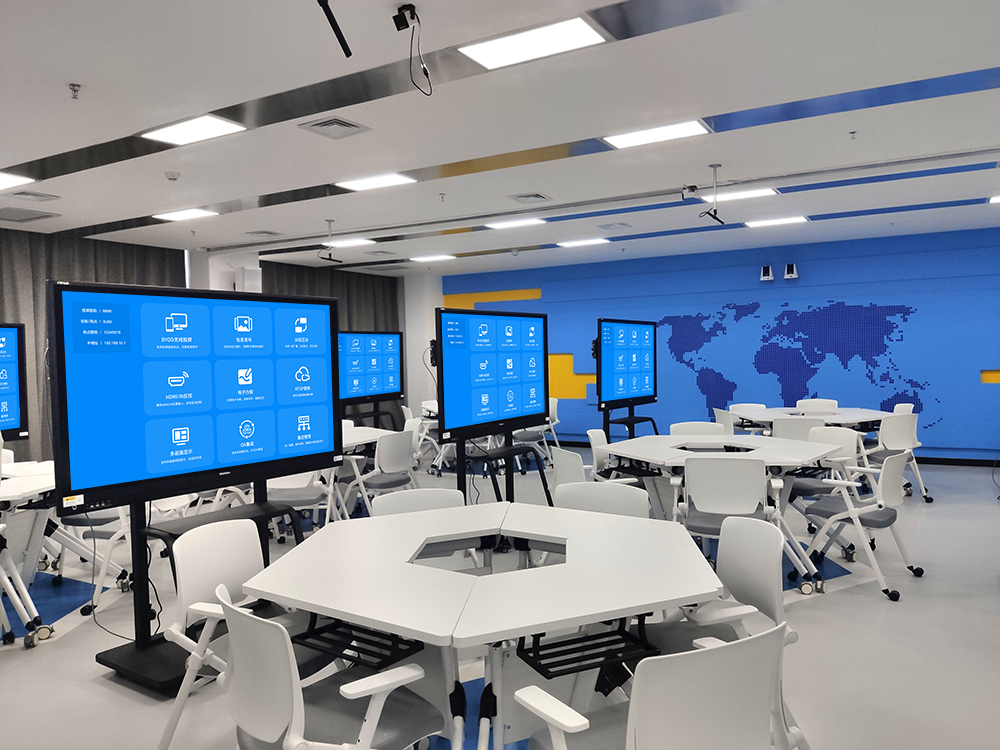Use This for Group Discussions: More Efficient Collaboration and Sharing
Want to solve the problem of “difficulty in synchronizing group results and low efficiency in cross-group communication“ during group discussions? This screen mirroring device easily handles it! It supports independent screen mirroring for multiple groups, one-tap sharing of results, and real-time cross-group interaction. It covers scenarios like corporate proposal discussions, training breakouts, and academic exchanges, turning discussions from “scattered communication” into “efficient collaboration.”
1-Minute to Set Up a Discussion Scenario, Zero Technical Threshold
The operation is simple and quickly activates group collaboration:
- Multi-Screen Synchronized Networking: Plug the screen mirroring receivers into each group’s secondary screen and the main display screen. After powering on, they automatically assign group identifiers (e.g., “Group 1 Discussion Screen,” “Group 2 Discussion Screen”). Participants’ computers and tablets connect to the discussion area’s Wi-Fi, with no complex setup required.
- Independent Group Mirroring: Each group can click “Project” on their computer to select their corresponding secondary screen, or pull down the control center on their phone and select “Screen Mirroring” to connect. Independent screen mirroring is completed in 1-2 seconds, allowing real-time display of ideas and annotation of proposals within the group, with no software installation required throughout the entire process.
Core Advantages: Meeting the Needs of Group Discussions
Multiple Groups Mirror Independently, No Interference in Collaboration
- It supports 3-8 groups mirroring independently at the same time. Each group’s secondary screen only displays its own content, allowing group members to focus on discussions and real-time modifications of proposals, avoiding interference from other groups’ content.
- Multiple devices within a group can take turns mirroring: Group member A casts the framework ideas from their computer, and Group member B supplements data charts from their tablet. Content seamlessly transitions, making collaboration more cohesive and eliminating the need to repeatedly plug and unplug devices.
One-Tap Result Sharing, Smoother Cross-Group Communication
- After a group completes its discussion, they click the mirroring device’s “Push to Main Screen,” and their results are synchronized to the main display screen in 1 second for everyone to view. This eliminates the need for group representatives to “take turns going up to the stage to plug in and display,” saving 30% of result sharing time.
- It supports “multi-group result split-screen comparison“: the main screen can simultaneously display 2-4 groups’ core proposals (e.g., Group 1 on the left, Group 2 on the right). Differences are clear at a glance, eliminating repeated content switching during cross-group communication and making idea exchange more direct.
Real-time Interactive Annotation, More In-Depth Discussion
- After each group’s results are mirrored, the presenter can use a tablet to annotate modification suggestions on the main screen (e.g., “data needs to be supplemented here”). Annotations are synchronized back to the corresponding group’s secondary screen, allowing groups to adjust their proposals in real-time.
- When asking cross-group questions, the questioner can take a photo of their group’s supplementary ideas with their phone and cast it to the main screen. The corresponding group can respond in real-time on their secondary screen. Interaction doesn’t require “shouting out loud,” making the discussion atmosphere more focused.

Applicable to All Scenarios: Empowering Group Discussions
Corporate Proposal Discussions: More Precise Decision-Making
- The marketing department discusses promotion proposals in groups. Group 1’s secondary screen shows channel planning, and Group 2’s secondary screen shows budget allocation. Each group modifies and optimizes in real-time. After completion, they push to the main screen with one tap. The presenter compares and annotates “overlapping channel coverage” and “reasons for budget differences,” quickly integrating advantages across groups, boosting proposal refinement efficiency by 50%.
- Product R&D groups discuss feature design. Each group casts prototype diagrams to their secondary screen, and members annotate interaction logic with a stylus. After results are pushed to the main screen, the technical group can directly annotate technical feasibility on the main screen, reducing communication deviations.
Training Breakouts: More Proactive Learning
- In sales training, groups simulate client communication scenarios. Each group casts communication scripts and response strategies to their secondary screen, and members take turns demonstrating. After results are pushed to the main screen, the trainer annotates “script optimization points,” and other groups can supplement with their experiences in real-time. Interactive learning boosts efficiency by 40% compared to traditional training.
- In management training, groups discuss case solutions. Each group casts their analysis ideas to their secondary screen. After completion, the main screen displays a split-screen comparison, and trainees provide cross-group feedback. The trainer summarizes and refines common methods, leading to more thorough knowledge absorption.
Academic Exchanges: More Thorough Idea Exchange
- Scientific research teams discuss experimental proposals in groups. Group 1 casts data collection ideas, and Group 2 casts analysis methods. During independent mirroring, group members can focus on verifying details. After results are pushed to the main screen, experts can use a computer to supplement literature references and annotate “this method needs to be combined with XX research,” making cross-group academic exchanges more professional.
- In student group project discussions, each group casts their research report to their secondary screen. After completion, they push to the main screen. The teacher annotates “research scope can be expanded” in real-time, and the group can modify it on their secondary screen simultaneously. Discussion and optimization proceed together, eliminating post-meeting adjustments.
Practical Details: Peace of Mind for Discussion Scenarios
- Stable Transmission and Anti-interference: Dual-band (2.4GHz+5.8GHz) transmission technology ensures that when multiple groups mirror simultaneously, latency is less than 20ms, with no lagging page-flips or annotations. Large discussion meetings won’t experience interruptions.
- Permission Control: Set “group mirroring permissions,” allowing only members of the current group to modify mirrored content, preventing unauthorized operations. Main screen display permissions are controlled by the presenter, ensuring discussion order.
- Portable and Easy to Deploy: The screen mirroring device is palm-sized, weighing less than 40g. When adjusting the number of groups temporarily, receivers can be quickly added or removed, adapting to different scales of discussion needs.
Whether for corporate proposal discussions, training breakouts, or academic exchanges, using this screen mirroring device to set up group discussion scenarios can make group collaboration more focused, result sharing more efficient, and cross-group interaction more in-depth, truly enhancing the value and efficiency of discussions.